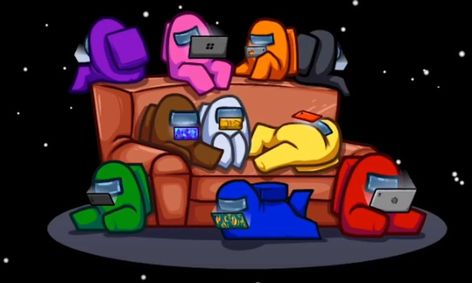Thanks to pop culture and the media, video gamers have gained some harsh stereotyped over the years, as isolated individuals who lurk around in the darkness of their rooms — illuminated only by the light of their computer monitors as they play.
Today, this couldn’t be farther from the truth, as video games have become a formidable avenue connecting all kinds of people around the world. On platforms like YouTube, for instance, personalities like PewDiePie and Markiplier regularly reel in millions of viewers — amassing thousands of supporters and communities.
This phenomenon is partially driven by the rise of technologies such as livestreaming, which have enhanced the gaming experience, and while digital interaction isn’t a new innovation by any means, an increasingly online generation has found a sense of belonging in this virtual community. So, here are three other ways online games are becoming more social
Multiplayer Games Encourage Collaboration and Friendships
Almost a year into the pandemic, we are all grasping at straws to keep ourselves sane. Video games have given us one way to do that. Whether it’s a session of Among Us or a round of good old-fashioned DotA, they’ve become a means of socializing with the outside world from the safety of our homes. In fact, this potential to forge strong friendships is something gamers value, with some of them even finding love in the most unassuming places — like a World of Warcraft tavern. This goes to show that the social aspect of video games is just as important as their entertainment value.
Chat Rooms Foster Communities and Conversations
Chat rooms are an integral part of social online gaming. Thanks to more stringent chat filters and better AI learning, they’ve become safer spaces for friends and strangers to interact. In fact, chat rooms are even making the experience more personal and fun when playing classic games. One example is with online bingo. Aside from their exciting selection of modern themes like Temple of Light and Big Money Frenzy, Cheeky Bingo features chat rooms where players can discuss and interact — whether it is talking about gaming, tips, or just some good-natured ribbing. True enough, chat rooms are so effective at fostering conversations that they have paved the way for the rise of community-centered platforms like Discord and Twitch.
Online Games Promote Shared Experiences
Sometimes, video gaming isn’t even about being good at playing, but more of finding a shared joy and frustration in facing obstacles and challenges (albeit virtual) with friends. One good example of this is horror “let’s players” — content creators who stream commentaries of horror games while they play. Most of their viewers would probably never even play a horror game on their own. But through livestreaming and online chat, audiences can experience the vicarious thrill of dying to a vengeful spirit like Slendrina, or the sheer relief of making it out of Freddy Fazbear’s pizzeria alive, without playing the games themselves. Such experiences make a solid foundation for strong community bonds.
Conclusion
The video gaming world is often misconstrued as just a bunch of boys idling away their time. But the industry is always evolving, surprising even the harshest critics in new and often exciting ways. With 2.2 trillion USD expected in 2021 in the industry further validates that social impact of video games is not to be underestimated.















[…] post 3 Ways Online Gaming is Becoming More Social first appeared on Internet Security Blog – […]